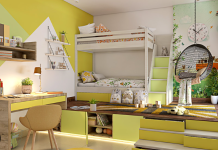The plumbing in your home starts at your water meter and ends with your connection to the main sewer pipe. In other words, all the pipes, joints, valves, and appliances on your property are your concern. Most of the time, all the different plumbing elements work perfectly together. You turn on a faucet and you get water. Some Plumbing Issues are Uncovered.
But, that doesn’t mean you shouldn’t be prepared for the issue, even if your instant response is to call a great Sydney plumber. Once you start thinking about your plumbing system you’ll realize that there are higher risk areas. These are generally where the pipes are more tightly packed and are the places you should pay most attention to.
Alongside an annual plumbing inspection by a qualified professional, you should visually inspect the plumbing regularly. Start with the following four top problem areas.
- Basements
If your home has a basement then this is the most likely area to experience an issue. The problem with most basements is that they are the lowest point of the house and often below the level of the ground surrounding the house.
This means they need a good damp-proof course to protect them from moisture ingress. Alongside this, the basement is the lowest point of your home. Any water leaking from inside or outside your home will end up in the basement. It’s surprising how quickly this space can flood.
The simplest solution is to check your gutters and outside drains, keeping them clean will help to prevent water from getting in from outside. You’ll also need to make sure that your damp proof layer is working properly. Perhaps most importantly, you should invest in a pump that can be fitted into your basement and eliminate any water before it causes any real damage to your furnishings.
- Bathroom
It’s not surprising that the bathroom is high on the list. There should be cold water and a hot water supply entering the bathroom. The pipes will then split, feeding the toilet, sink, and shower. Each of these pipes is likely to have an individual valve to allow future work to be completed with minimal disruption.
Of course, this means there are multiple joins and bends in the bathroom plumbing. The greater the number of joins and bends the more likely it is that one of them will experience an issue.
Don’t forget that, in most bathrooms, the water pipes are behind, or in the walls. That can make it very hard to identify a leak and fix the issue.
- Kitchen
The next most common spot for issues is the kitchen. Again, this has multiple splits in the pipes, allowing you to supply the sink, dishwasher, and even a washing machine. Every joint is a potential disaster.
You may also have a garbage disposal unit. All of these items don’t just receive water, they send it out to the main drains. If the wrong waste is allowed into the drains it can cause serious issues.
It’s a good idea to visually inspect your kitchen plumbing regularly.
- Drains
The final problem area in your home is likely to be the drains themselves. These connect all your appliances to the main sewer line. Don’t forget that you are responsible for everything on your property, including the main sewer pipe until it leaves your property.
There are many things that can damage the sewer pipe, such as tree roots. However, most houses are more likely to experience an issue with clogs. This is when the wrong items are allowed to go down the drains. That’s things like food waste, wet wipes, sanitary products, and even the accidental kid’s toy.
These things bind together in the pipes and slowly cause a clog. When this happens the wastewater has nowhere to go and will back up in the pipes. Eventually, the pressure of the water will dislodge the clog. If it doesn’t the wastewater will start entering your home and that’s not beneficial for your health or your home.
It’s easier to make sure the wrong things aren’t going down the drain than it is to unclog them, which isn’t always something you can do yourself.
Final Thoughts
The simplest way to reduce the risk of plumbing issues at home is to have your plumbing system regularly checked. You can do this visually yourself and you should have a professional come in to inspect it at least once a year. This will help to create a relationship with your local plumber. Should you ever have an issue with your plumbing you’ll be glad you’re on good terms with them!
Plumbing is generally regarded as a necessity, knowing the most common problem areas in your home means you can take steps to keep the water supply flowing, and your family happy.








